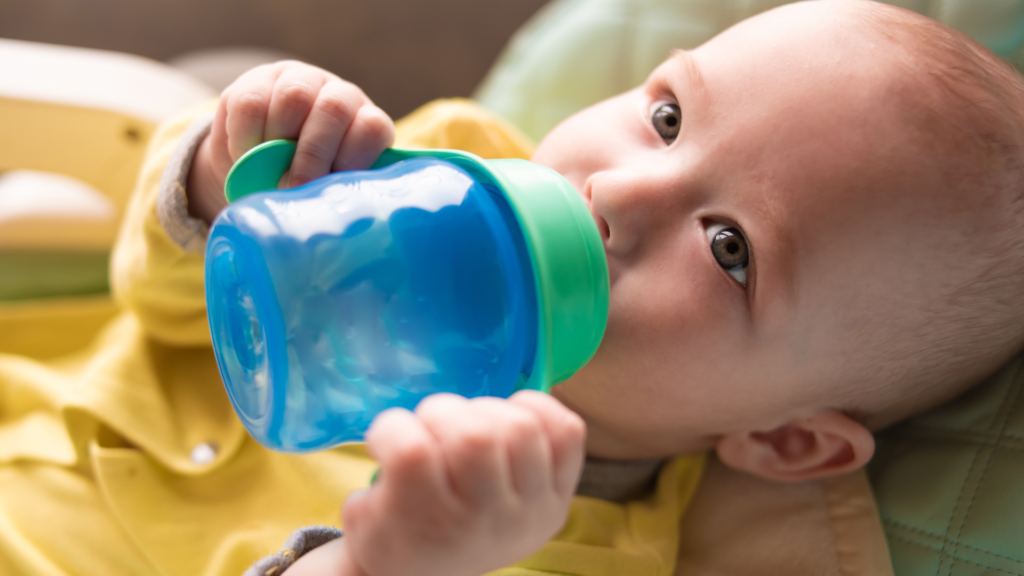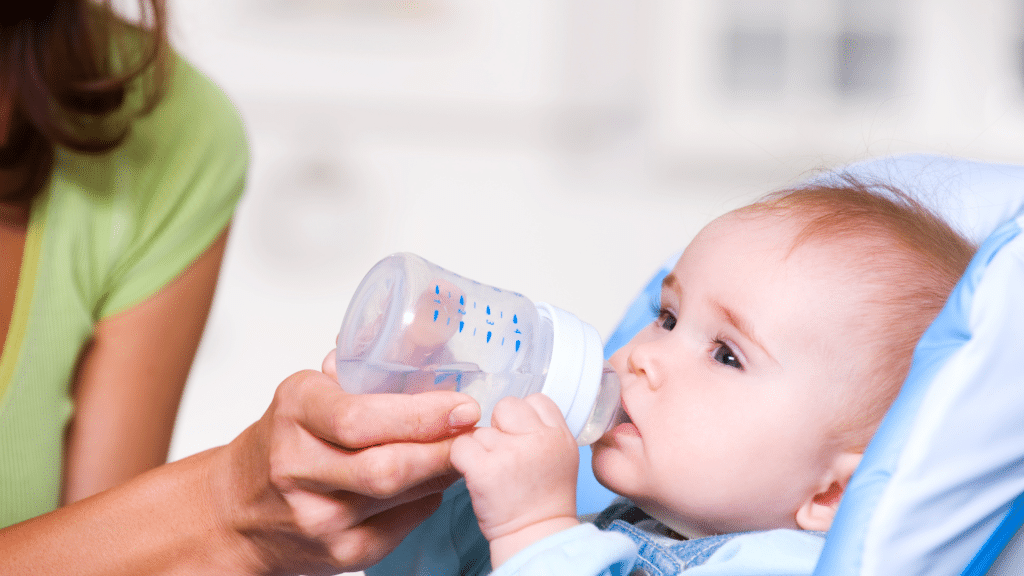Water, often dubbed the “elixir of life,” is indispensable to our well-being. For adults, it’s crucial, but for babies—those tiny beings in the initial stages of life—it’s even more vital. A baby’s entrance into the world is accompanied by the promise of purity, which should extend to everything they consume, including water.
Sadly, not all water is created equal. With rising environmental concerns and unforeseen contaminants threatening our water supplies, understanding the impact of water quality on the youngest members of our society becomes imperative.
In this article, we delve deep into how the quality of water intertwines with a baby’s health, emphasizing the need for vigilance and proactive measures to ensure the purest beginnings for our children. Join us on this journey as we uncover the hidden dimensions of a resource we often take for granted and the silent ways it influences the blossoming life of an infant.

Understanding the Basics: What is Water Quality?
Water, a simple combination of hydrogen and oxygen, forms the basis of our sustenance. Yet, when we turn on the tap, how often do we question the quality of the water filling our glasses? Especially when this drinking water becomes a staple ingredient in infant formula or when pregnant women rely on it daily, understanding water quality is paramount. But what determines “quality” in drinking water?
Drinking Water Quality Defined
At its core, drinking water quality refers to the condition or state of water in relation to the requirements of one or more biotic species and or to any human need or purpose. This extends beyond just hydration; it affects cooking, cleaning, and, crucially for new parents, baby formula preparation. The department of health and the department of environmental protection have guidelines that specify what is considered safe in our water supply. These guidelines are based on extensive research and routinely monitored data sets to ensure public drinking water systems prioritize health.
Elements Determining Water Quality
There are various elements, both natural and man-made, that can influence drinking water quality:
1. Chemical Contaminants: These can include high levels of fluoride added to public water systems to prevent dental issues, which, in excess, can cause dental fluorosis in children. Other chemicals, like lead and pesticides, can also seep into our water systems.
2. Bacterial Contaminants: Harmful bacteria can lead to diseases that may be particularly dangerous for babies with a growing body and developing immune system.
3. Physical Parameters: This encompasses the turbidity or cloudiness of water, which can affect its potability.
4. Radiological Elements: These are derived from the natural and artificial radioactivity in water.
Sources of Contamination
Contaminated drinking water is a global concern. Factors influencing water contamination include:
- Natural Sources: Natural occurrences like mineral leaching from rocks can introduce contaminants.
- Water Systems and Infrastructure: Ageing water systems can lead to issues like lead contamination, especially in tap water.
- Pollution: Industrial runoff, agricultural chemicals, and inadequate waste disposal can cause significant water pollution and consequently poorer birth outcomes for bottle-fed infants or those whose mothers consumed contaminated water during pregnancy.
- Private Wells vs. Public Water Supplies: Private wells might not be as routinely monitored as public supplies. Thus, the risk of infants exposed to harmful substances, potentially leading to low birth weight or preterm birth, might be higher.
The link between contaminated water supplies and birth outcomes in bottle-fed infants is undeniable. For instance, results suggest from studies in labor economics and health sectors that there’s a correlation betweencontaminated drinking waterand poorer educational attainment and health outcomes, including low birth weight and preterm birth. Protecting infants from these harmful contaminants, especially in the pivotal early stages, is of utmost importance.
It is essential to get water tested, especially well water. The testing results shed light on any harmful substances, ensuring that infants drink, and are fed with, water free from harmful contaminants. The food we prepare, especially infant formula, can carry these contaminants directly to our children, emphasizing the need for vigilance in our water supplies.

How Babies Are Unique: The Vulnerability of Their Developing Systems
As new parents or caregivers, understanding the fragility and uniqueness of babies becomes paramount. They’re not just miniature versions of adults; rather, they possess developing systems that make them vulnerable in ways we might not immediately recognize. When talking about water, for instance, the debate often revolves around drinking water contaminants and their impact on adults. But what happens when these contaminants find their way into a baby’s system?
Babies’ Developing Immune and Digestive Systems
A baby’s immune system is a work in progress. While they inherit some antibodies from their mothers, especially if breastfed, their own immune defenses are still developing. This makes them more susceptible to diseases and infections. The department of health and the department of environmental protection emphasize the importance of safe drinking water, especially for infants. Pollutants or contaminants, like lead or certain chemicals from tap water or poorly sourced bottled water, can lead to long-term health concerns.
The digestive system of infants is similarly delicate. Unlike adults, babies’ stomachs produce less acid, making it harder for them to kill harmful bacteria. Hence, the water used in baby formula or even to wash baby food needs to be of the highest quality. Contaminated drinking water can upset their stomachs, potentially leading to issues like low birth weight or other digestive problems.
Differences in Metabolism and Body Composition
Infants have a higher metabolic rate than adults. This means they require more water relative to their size. Given their reliance on liquids, especially in the initial months through either breastfeeding or formula, the quality of this water becomes even more critical. Infants exposed to contaminants, be it from tap water or even certain bottled water, stand at a greater risk of negative outcomes. The data set of birth records indicates a correlation between water quality and the overall health of infants born in certain areas, underscoring this vulnerability.
Moreover, an infant’s body composition is unique. With a higher percentage of water in their bodies compared to adults, any water contamination can affect them disproportionately. High levels of contaminants or exposure to water pollutants can have lasting repercussions on infant health. Whether it’s fluoridated water, well water with traces of lead, or public drinking water with undetected chemicals, babies are at a heightened risk.
Water’s Role in Baby’s Daily Life
The gentle splash of water, its rhythmic drops, and its soothing coolness have a profound role in the world of an infant. From their first taste of formula to the nightly ritual of a calming bath, water is as crucial as the air they breathe. However, ensuring the purity and safety of this water is a responsibility that shouldn’t be taken lightly, especially given the numerous reports on drinking water contaminants and their potential repercussions on infant health.
1. Formula or Food Preparation
Water isn’t just about hydration for babies. For many, it’s a primary component of their nutrition. Tap water, when used in preparing infant formula, becomes a direct source of nourishment. The department of health emphasizes the need for using safe, clean water devoid of contaminants such as lead, fluoride, or other chemicals, especially in areas with known water pollution issues. Well water, often believed to be pure, may also contain contaminants and should be thoroughly tested. The link between contaminated drinking water and health issues, including low birth weight, highlights the gravity of this concern.
2. Bathing and Skin Sensitivity
A baby’s skin is delicate, almost like the petal of a flower. But it’s also a porous barrier, making it susceptible to whatever it comes in contact with. Bathing a baby isn’t just about cleanliness; it’s a sensory experience and an essential part of their daily routine. However, water contaminants can affect this experience. Babies can absorb low levels of contaminants through their skin, or even ingest water during bath time. The risk of exposure to pollutants, particularly from unfiltered tap water or inadequately managed public water systems, can lead to skin irritations or more severe health issues.
3. Cleaning and Sterilization of Baby Products
From bottles to toys, everything that a baby uses requires regular cleaning and often sterilization. The cleanliness of these products is only as good as the water used to wash them. Public drinking water, while routinely monitored, may still contain contaminants not suitable for an infant’s developing system. Using such water without proper filtering or boiling can expose children to harmful chemicals or bacteria, defeating the purpose of sterilization entirely.

Conclusion
In the tender tapestry of life, the early threads of childhood are woven with purity, hope, and vulnerability. As guardians of the next generation, ensuring a healthy start for our babies is our foremost duty. Water, a simple molecule, carries within it the power to nourish life or, if contaminated, to hinder its blossoming. Its pivotal role in infant nourishment, hygiene, and overall well-being cannot be overstated.
In our exploration of water quality, it’s evident that ensuring the purity of the water our babies interact with daily is not just a matter of convenience—it’s a profound responsibility. The intricate systems of a baby’s developing body are especially susceptible to the adverse impacts of water contaminants, making them disproportionately vulnerable to the water’s purity in their surroundings.
The nexus between water quality and infant health is a clarion call for action. Parents, communities, and governments alike need to prioritize the quality of water. From regular testing and updated water infrastructure to informed decisions about sources, every drop matters. After all, pure water isn’t just about quenching thirst—it’s about securing a robust foundation for our children, a foundation on which they can thrive and flourish.
Did this article help you? Please comment below, and if you have any questions, please ask.



